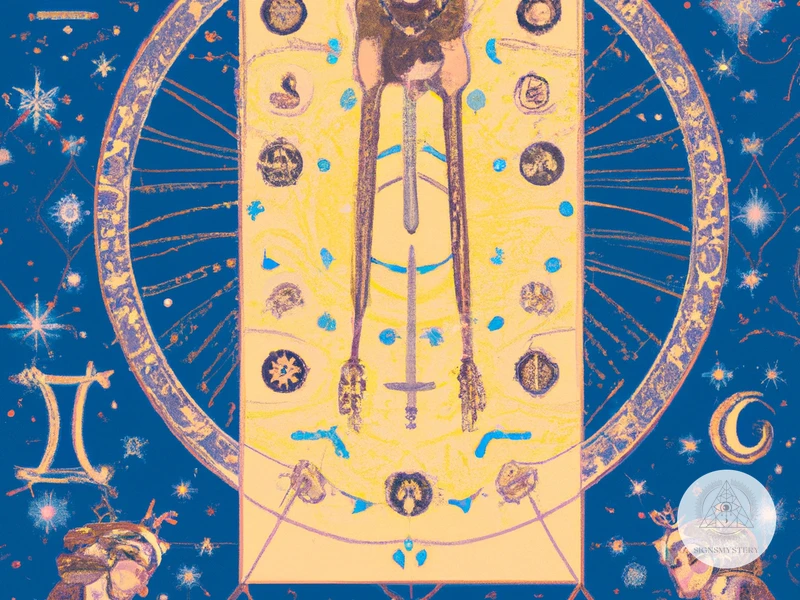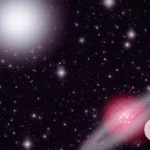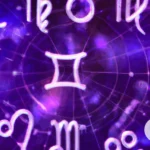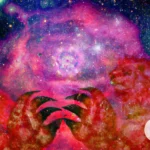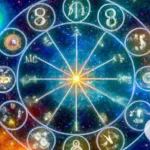As humans, we have always been fascinated by the mysteries that surround us. From the stars up above to the secrets that lie within ourselves, we have sought to unravel the enigmas that have puzzled us since time immemorial. Tarot and astrology are two such ancient practices that have captured our imagination and sparked countless debates and discussions. While they are often seen as distinct entities, their similarities and differences continue to intrigue and inspire us. In this article, we will take a closer look at the world of tarot and astrology, exploring their origins, unique symbols, and how they can be used in conjunction to provide a deeper understanding of ourselves and the world around us.
What is Tarot?
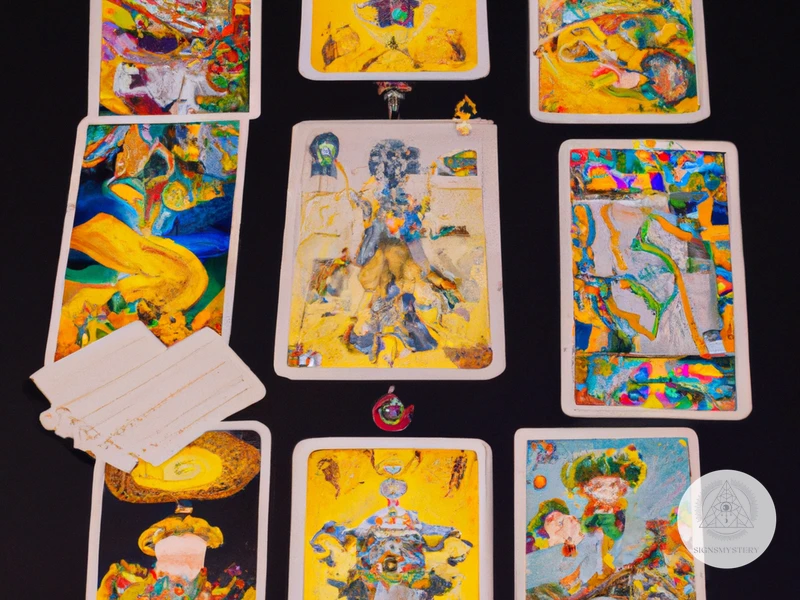
As we delve deeper into the mysteries of divination and spiritual guidance, one practice that often comes up is the use of Tarot cards. The intricate and ancient tradition of Tarot has been a popular tool for divination for centuries, known for its powerful symbols, archetypes, and intuitive insights. But what exactly is Tarot, where did it come from, and how can we use it to gain insight and guidance in our lives? Let’s explore the world of Tarot together and see how it can connect with other mystical traditions such as astrology. For more information on how Tarot and astrology can work together for guidance, check out our article on Tarot and Astrology Guidance.
Origins and History of Tarot
The origins and history of Tarot are shrouded in mystery and have been the subject of much debate among scholars. Some believe that the cards were first used as early as the 14th century in Italy, while others trace the Tarot’s origins back to ancient Egypt or even Atlantis. However, there is no concrete evidence to support these claims.
The first known Tarot decks were created in Italy during the Renaissance period and were used primarily for playing games. It wasn’t until the late 18th century that Tarot cards began to be associated with divination and fortune-telling. This was due in part to the publication of a book called “Le Tarot des Bohémiens” by French occultist Jean-Baptiste Alliette, also known as Etteilla.
In the late 19th and early 20th centuries, the Tarot experienced a resurgence in popularity thanks to the efforts of the Hermetic Order of the Golden Dawn, a secret society that included among its members such notable figures as Aleister Crowley and W.B. Yeats. The Golden Dawn developed a system of Tarot interpretation that drew heavily on astrology, the Kabbalah, and other esoteric traditions.
Today, Tarot remains a popular tool for spiritual guidance and self-discovery. Many practitioners combine Tarot with other forms of divination, such as astrology, to gain a deeper understanding of themselves and the universe around them. To learn more about how Tarot can be used in conjunction with astrology, check out our article on Tarot Spreads for Astrology.
Tarot Card Structure and Symbolism
The Tarot card structure is made up of two main categories, the Major Arcana and the Minor Arcana. The Major Arcana consists of 22 cards, each with a distinct name and number, from “The Fool” to “The World.” These cards represent major life events and spiritual transformations.
On the other hand, the Minor Arcana consists of four suits- Cups, Swords, Pentacles, and Wands- with each having 14 cards. The Minor Arcana represents the everyday events and experiences we face in life. Each suit is associated with a specific element- Water, Air, Earth, and Fire- that further enhances their symbolic meaning.
Individual Tarot cards also hold their own symbolism, with unique imagery and meanings attached to each one. For instance, the “Strength” card depicts a woman taming a lion, signifying the inner strength and courage we need to overcome adversity. Meanwhile, the “Death” card, despite its ominous title, actually represents transformation and rebirth, rather than physical death.
In Tarot, the symbolism of each card holds significant importance in readings. By interpreting the meaning behind each card and its placement in the spread, Tarot readers can gain insight into the querent’s current situation and potential future outcomes.
While Tarot cards have their own symbolism, they also share connections with astrology. Many Tarot decks feature nods to astrological symbols, such as the sun and moon, and individual cards can represent certain zodiac signs or ruling planets. This is why combining Tarot and astrology can result in even deeper readings and greater insight. To learn more about how Tarot and astrology intersect, check out our article on Tarot and Zodiac.
What is Astrology?
As we delve deeper into the world of divination, we come across yet another fascinating practice – astrology. Astrology is the study of celestial objects and their movements, as well as their influence on human affairs and the natural world. Its origins date back to ancient times when people began observing and interpreting the cosmos for guidance and insight. It has evolved over time, with different cultures applying their own unique perspectives and techniques to the practice. Today, astrology is considered to be a powerful tool for self-awareness and understanding. In the following sections, we’ll explore the origins and history of astrology, as well as its core symbols and meanings. And, if you’re curious about how astrology and tarot interact, be sure to check out our article on astro-tarot transits for some fascinating insights.
Origins and History of Astrology
Astrology has been around for thousands of years, and its origins can be traced back to ancient civilizations such as Babylonia and Egypt. These early astrologers believed that the movement of celestial bodies, particularly the Sun, Moon, and planets, had a significant influence on human affairs.
One of the earliest known astrological texts is the Vedanga Jyotisha, which dates back to 1400-1200 BCE in India. This text provided detailed information on the movement of the planets and their impact on human life.
In ancient Greece, astrology was heavily influenced by the work of philosopher Plato and mathematician Pythagoras. They believed that the movements of celestial bodies corresponded to mathematical principles and that the planets could be used to predict future events.
During the Renaissance period, astrology experienced a resurgence in Europe. This was largely due to the work of prominent astrologers such as Johannes Kepler and Galileo Galilei, who used their knowledge of astronomy to further the study of astrology.
Today, astrology remains a popular practice around the world. Many people use their birth charts, which are based on the position of the Sun, Moon, and planets at the time of their birth, to gain deeper insight into their personality, relationships, and life path.
Astrology has also had a significant impact on other forms of divination, including tarot. Many tarot decks incorporate astrological symbolism, with each card corresponding to a particular planet, zodiac sign, or astrological house.
If you want to learn more about how tarot and astrology intersect, check out our articles on tarot and ruling planets, tarot and astrological houses, tarot and planetary retrogrades, and tarot and lunar cycles.
Astrological Symbols and Meanings
Astrology is the study of the movements and relative positions of celestial objects and their influence on human affairs. Astrology has been practiced for thousands of years, with origins dating back to ancient civilizations such as the Babylonians, Egyptians, and Greeks. At its core, astrology is based on the concept that the positions and movements of celestial objects such as stars, planets, and constellations can provide insight into human personality traits and major life events.
Planets: The 10 major planets used in astrology include the Sun, Moon, Mercury, Venus, Mars, Jupiter, Saturn, Uranus, Neptune, and Pluto. Each planet is believed to represent different aspects of a person’s personality, with the Sun representing the ego, self-expression, individuality, and willpower; the Moon representing emotions, intuition, and the unconscious mind; and Mercury representing communication, logic, and knowledge.
Zodiac Signs: The 12 zodiac signs are Aries, Taurus, Gemini, Cancer, Leo, Virgo, Libra, Scorpio, Sagittarius, Capricorn, Aquarius, and Pisces. Each sign is associated with specific personality traits and represents different areas of life, such as Aries representing initiative and leadership, Taurus representing material possessions and stability, and Pisces representing creativity and spirituality.
Aspects: Aspects refer to the angular relationships between planets and other celestial objects, and are believed to influence how those planets interact with each other. Some of the most common aspects in astrology include the conjunction, which occurs when two planets are in the same sign; the opposition, which occurs when two planets are opposite each other; and the trine, which occurs when two planets are 120 degrees apart.
Houses: There are 12 houses in astrology, each of which is associated with different areas of life, such as the first house representing the self and one’s personal identity, the seventh house representing partnerships and relationships, and the tenth house representing career and public life. The planets and zodiac signs are believed to interact with each other differently depending on their placement within these houses.
Astrology offers a unique perspective on personality traits, major life events, and the workings of the universe. By exploring the symbolism and meanings of celestial objects, astrologers are able to provide insight and guidance into a wide range of areas, from love and relationships to career and finance.
Comparing Tarot and Astrological Symbolism
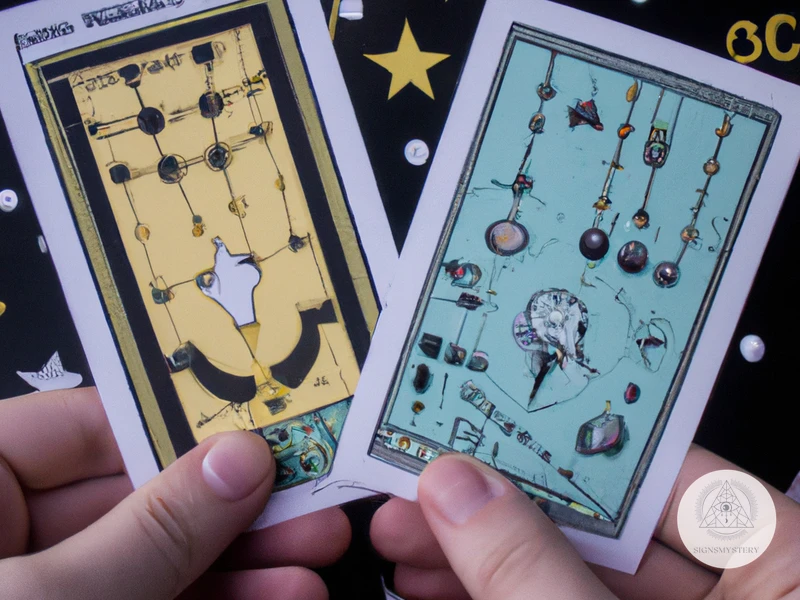
As we delve deeper into the mystical world of divination, it’s hard not to notice the rich symbolism found in both tarot and astrology. While their origins and practices may differ, both tarot and astrology provide insight into the human experience through the interpretation of symbols. But how do these two ancient practices compare when it comes to the symbolism and meanings behind their respective systems? Let’s explore the similarities and differences between tarot and astrology’s use of symbols and see what makes these practices unique in their own way.
Major and Minor Arcana vs Planets and Zodiac Signs
When comparing tarot and astrological symbolism, one of the key differences is the way that they categorize and represent their respective systems. Tarot uses a structure of major and minor arcana, while astrology divides its symbols among planets and zodiac signs.
The major arcana of tarot consists of 22 cards, each representing a significant archetypal figure or concept. These cards are often considered the most powerful and profound of the deck, and are often used to represent major life events or deep psychological themes. The minor arcana, on the other hand, consists of 56 cards divided into four suits, each with its own set of meanings and associations.
In astrology, the planets represent different aspects of the self and the world. Each planet is associated with certain qualities and influences, such as Mars representing action or Venus representing love. The zodiac signs, on the other hand, are 12 divisions of the sky, each with its own unique set of characteristics and personalities.
While there may not be a direct correspondence between individual tarot cards and specific planets or zodiac signs, some tarot practitioners believe that there are underlying connections between the two systems. For example, the High Priestess card in the tarot could be associated with the Moon in astrology, as both represent introspection, intuition, and the subconscious.
While the structures of tarot and astrology may appear different at first glance, both systems offer rich and complex symbolism that can be used to gain deeper insights into ourselves and the world around us. By exploring these connections and correspondences, we can gain a more holistic understanding of the mysteries of life.
Elemental Correspondences
Both Tarot and astrology use elements to represent different energies and qualities. In Tarot, the four major elements are represented in the Minor Arcana suits: Wands as fire, Cups as water, Swords as air, and Pentacles as earth. Each suit has a different set of meanings and associations based on its elemental correspondences. For example, Wands represent creativity, passion, and action, while Cups represent emotions, intuition, and relationships.
Similarly, in astrology, the four elements—fire, water, air, and earth—are associated with different zodiac signs. Fire signs include Aries, Leo, and Sagittarius, and represent passion, creativity, and energy. Water signs, such as Cancer, Scorpio, and Pisces, are associated with emotions, sensitivity, and intuition. Air signs—Gemini, Libra, and Aquarius—represent communication, intellect, and social connections. Finally, earth signs—Taurus, Virgo, and Capricorn—represent practicality, stability, and material possessions.
Table of Elemental Correspondences:
| Tarot | Astrology |
|---|---|
| Wands (fire) | Aries, Leo, Sagittarius (fire) |
| Cups (water) | Cancer, Scorpio, Pisces (water) |
| Swords (air) | Gemini, Libra, Aquarius (air) |
| Pentacles (earth) | Taurus, Virgo, Capricorn (earth) |
Studying elemental correspondences in both Tarot and astrology can provide a deeper understanding of the energies and qualities associated with certain cards or planets/signs. For example, if a Tarot reading includes several cards from the Wands suit and an Aries is in their Mars Return, it may suggest a time of high energy and action. Conversely, if a reading includes predominantly Cups cards and a Cancer is in their Saturn Return, it may suggest a time of emotional growth and reflection. Combining knowledge of elemental correspondences in Tarot and astrology can bring a richer and more nuanced understanding to readings and interpretations.
Court Cards and Houses
The court cards in tarot and the houses in astrology have a lot in common. Both represent different facets of personality, as well as external circumstances and environments that can influence a person’s life. In tarot, the court cards are divided into four suits: swords, wands, cups, and pentacles. Each suit represents a different aspect of life, such as intellectual pursuits, creativity, emotions, and material possessions. Within each suit, there are four different court cards: the page, knight, queen, and king.
Similarly, houses in astrology represent different areas of life, such as career, relationships, and spirituality. Each house is associated with a different zodiac sign, which can shed light on the themes and energy that will be present in that area of life. For example, the 10th house, which is associated with career, is ruled by Capricorn, a sign known for its hardworking and ambitious nature.
So how do these two systems relate to each other? Each court card can be associated with a different house in astrology, depending on its personality traits and energy. For example, the knight of swords, known for his intellectual and analytical approach, could be associated with the 3rd house in astrology, which is associated with communication and learning. The queen of cups, on the other hand, could be associated with the 4th house, which is
Subscribe to Our Newsletter
Sign up to receive the latest news and updates.
Understanding the houses in astrology can provide deeper insight into the meanings of the tarot cards. For example, if the 10 of swords appears in a tarot reading, which is often associated with pain and betrayal, knowing that it corresponds to the 12th house in astrology, which is associated with endings and closure, can provide more context and understanding for the reading.
The court cards and houses both provide valuable insight into different aspects of life and personality. When used together, they can enhance one’s understanding of the complexities and nuances of the human experience. Integrating both tarot and astrology into one’s spiritual practice can lead to a deeper level of self-awareness, empathy, and connection with the universe.
Using Tarot and Astrology Together
Many people believe both tarot and astrology hold a tremendous amount of wisdom and insight into human life and the world around us. Combining these two practices can create a powerful and unparalleled tool for interpreting and understanding the universe. There are several ways in which tarot and astrology can work together, and in this section, we will explore them in more detail. So, let’s dive into the world of the tarot and astrology and discover their potential synergy.
How Tarot Can Enhance Astrological Readings
When it comes to enhancing astrological readings, tarot can be a valuable tool. Here are a few ways in which tarot can enhance the accuracy and depth of astrological readings:
1. Providing visual representations: Tarot cards provide visual representations of abstract concepts and archetypes, making them a useful tool for understanding planetary energies and zodiac signs in a more tangible way. Drawing a tarot card can help to clarify and deepen astrological insights by providing concrete imagery to work with.
2. Adding layers of meaning: Each tarot card contains layers of symbolism, allowing for a deeper understanding of astrological aspects and transits. For example, drawing the tower card during a time of upheaval or transformation can add a new dimension to a challenging Pluto transit.
3. Bringing intuition into the mix: Astrology is a complex system with many layers of meaning, but sometimes the most important insights can come from our intuition. Tarot can help to tap into this intuitive wisdom by allowing us to explore astrological concepts in a more subjective, creative way.
4. Offering a different perspective: Sometimes we can get stuck in our own interpretations of astrological information, but tarot can offer a fresh perspective. Drawing a tarot card can provide an unexpected insight into an astrological transit or aspect, allowing us to see things in a new light.
Tarot can be a powerful tool for enhancing astrological readings, providing visual representations, added layers of meaning, access to our intuition, and a fresh perspective on this complex system.
How Astrology Can Provide Deeper Insight for Tarot Readings
Tarot and astrology are two powerful divination tools that work well independently, but when combined, they can offer even deeper insights and understanding. Astrology can provide a unique perspective to Tarot readings that can help uncover hidden meanings and offer a more profound understanding of the message being conveyed.
By analyzing the astrological symbolism within Tarot cards, a deeper understanding of the card’s meaning can be revealed. Each Tarot card is associated with one or more astrological correspondences, including the zodiac signs and planets. Understanding these associations can give additional context and insight to the interpretation of the cards.
Using an astrology tarot correlation table, one can determine the relationship between the astrological symbols and the corresponding tarot cards. For instance, The Empress card in Tarot is associated with Venus, which represents love, beauty, and abundance. Knowing this association can help the reader interpret the card with greater depth and meaning.
The astrological information can also provide insights into the timing and context of Tarot readings. By understanding the astrological influences at play during a specific time period or situation, the reader can gain a better understanding of the forces impacting the individual or situation they are reading for.
For example, if a person is going through a challenging time in their life and seeks a Tarot reading for guidance, their birth chart can provide valuable insights into the possible causes of their struggles. By understanding the individual’s astrological makeup, a Tarot reader can more accurately interpret the cards in the spread and provide recommendations or guidance based on the person’s unique circumstances.
Combining astrology and Tarot can result in a much more profound and insightful experience for a reader or querent seeking guidance. Utilizing the unique wisdom of both systems together can provide a more complete understanding of any given situation, and offer more meaningful insights into the journey of one’s life.
Conclusion
After exploring the rich symbolism and unique qualities of both tarot and astrology, it can be difficult to determine which one is superior. Each discipline offers its own perspective and wisdom, and both have been studied and practiced for centuries. However, one thing is certain: combining the insights of tarot and astrology can provide a deeper level of understanding and insight. By harnessing the power of both practices, individuals can gain a more comprehensive understanding of themselves, their relationships, and the world around them. So, instead of choosing between tarot and astrology, perhaps it’s best to embrace their differences and appreciate the beauty in their symbiotic relationship.
Appreciating the Unique Qualities of Tarot and Astrology
While Tarot and Astrology share some similarities in symbolism, it’s important to understand and appreciate their distinct qualities. Here are some of the unique characteristics of each practice:
- Tarot: The Tarot is a more intuitive and introspective practice, relying heavily on personal interpretation and imaginative symbolism. It allows for more creative freedom and allows for individual connections to be made with each card.
- Astrology: Astrology, on the other hand, is a more objective and empirical practice, based on numerical calculations and observation of the celestial bodies. It provides a more scientific approach to understanding personality traits and life events.
- Tarot: Tarot is often used as a tool for personal growth and self-reflection, helping individuals gain insight into their own thoughts, emotions, and behaviors. It can also provide guidance and support during times of difficulty or confusion.
- Astrology: Astrology, on the other hand, is often used to gain insight into one’s interpersonal relationships, career paths, and life events. It can help individuals make decisions based on their unique astrological chart and provide a sense of purpose and direction.
- Tarot: The Tarot is a more visual and creative practice, with each card containing rich and complex symbolism that can be interpreted in a variety of ways. It offers a unique and personal experience to each individual reader.
- Astrology: Astrology, however, is a more systematic and structured practice, with clear rules and guidelines to follow. It offers a precise and objective analysis of the individual’s life based on their birth chart and astrological placements.
Both Tarot and Astrology offer valuable insight and guidance in their own unique ways, making them powerful tools for self-exploration and personal growth. By appreciating the qualities of each practice, individuals can gain a deeper understanding of themselves and the world around them. By combining these practices, one can gain even deeper insights into their personality traits, life events, and purpose.
Combining Their Wisdom for Deeper Understanding
When it comes to divination and gaining insight into one’s life, both tarot and astrology offer unique and valuable perspectives. Combining the wisdom of these two practices can lead to even deeper understanding and insight. Here are some ways to combine the two:
Using astrology to inform tarot readings: Tarot readers can use astrological knowledge to inform their interpretations of the cards. For example, if a reading includes the Ten of Swords, which is often associated with painful endings, the reader can also consider the planet Saturn, which is traditionally associated with endings and limitations. This can deepen the interpretation and provide additional insights.
Using tarot to enhance astrology readings: Astrologers can use tarot to gain insights into their astrological readings. For example, if an astrological reading indicates a challenging period ahead, the astrologer can draw a tarot card to gain further insight into the nature of the challenge and potential strategies for navigating it.
| Using astrology to inform tarot readings | Using tarot to enhance astrology readings |
|---|---|
| 1. Consider the astrological correspondences of tarot cards | 1. Use tarot to gain deeper insights into astrological readings |
| 2. Use astrological transits and placements to contextualize and inform tarot readings | 2. Draw a tarot card to gain insight into the nature of a challenging astrological transit |
| 3. Use astrological knowledge to inform interpretations of court cards and elemental correspondences | 3. Use tarot to gain insights into the underlying motivations and energies of different astrological signs and placements |
By combining the two practices, practitioners can gain a more nuanced and comprehensive understanding of the energies and influences impacting a given situation or individual. This can lead to more detailed and accurate readings, as well as deeper insights into the underlying patterns and dynamics at play. Ultimately, whether one prefers tarot or astrology, the two practices can be combined to enhance and deepen understanding, creating a more thorough and meaningful approach to divination and self-understanding.
Frequently Asked Questions
What are the origins of Tarot?
The origins of Tarot are somewhat mysterious, but they are thought to date back to medieval Italy, where the cards may have been used for games or divination.
What is the structure of Tarot cards?
Tarot decks typically consist of 78 cards, divided into the major arcana (22 cards) and minor arcana (56 cards).
What do the symbols on Tarot cards represent?
The symbols on Tarot cards can represent a variety of things, including archetypes, universal themes, and psychological states.
What is the history of astrology?
Astrology has been practiced in various forms for thousands of years, with origins in Babylonian, Egyptian, and Greek cultures.
What do the symbols in astrology represent?
The symbols in astrology represent the planets, zodiac signs, and various other celestial bodies and points in space.
What are the major differences between Tarot and astrology?
One major difference is that Tarot is primarily a system of divination, while astrology is primarily a system of analyzing planetary positions and their influence on human affairs.
How can Tarot and astrology be used together?
Tarot and astrology can be used together to gain deeper insights into various aspects of life, such as relationships, career, and personal growth.
What is the significance of elemental correspondences in Tarot and astrology?
The elemental correspondences (earth, air, fire, water) in Tarot and astrology can provide additional layers of meaning and symbolism to readings and analyses.
What are court cards in Tarot, and how do they relate to houses in astrology?
Court cards in Tarot represent different personality types or energies, while houses in astrology represent different areas of life or experiences.
Can Tarot and astrology be used to predict the future?
While Tarot and astrology can certainly provide guidance and insight, they are not necessarily predictive systems and should not be relied upon for specific future outcomes.

